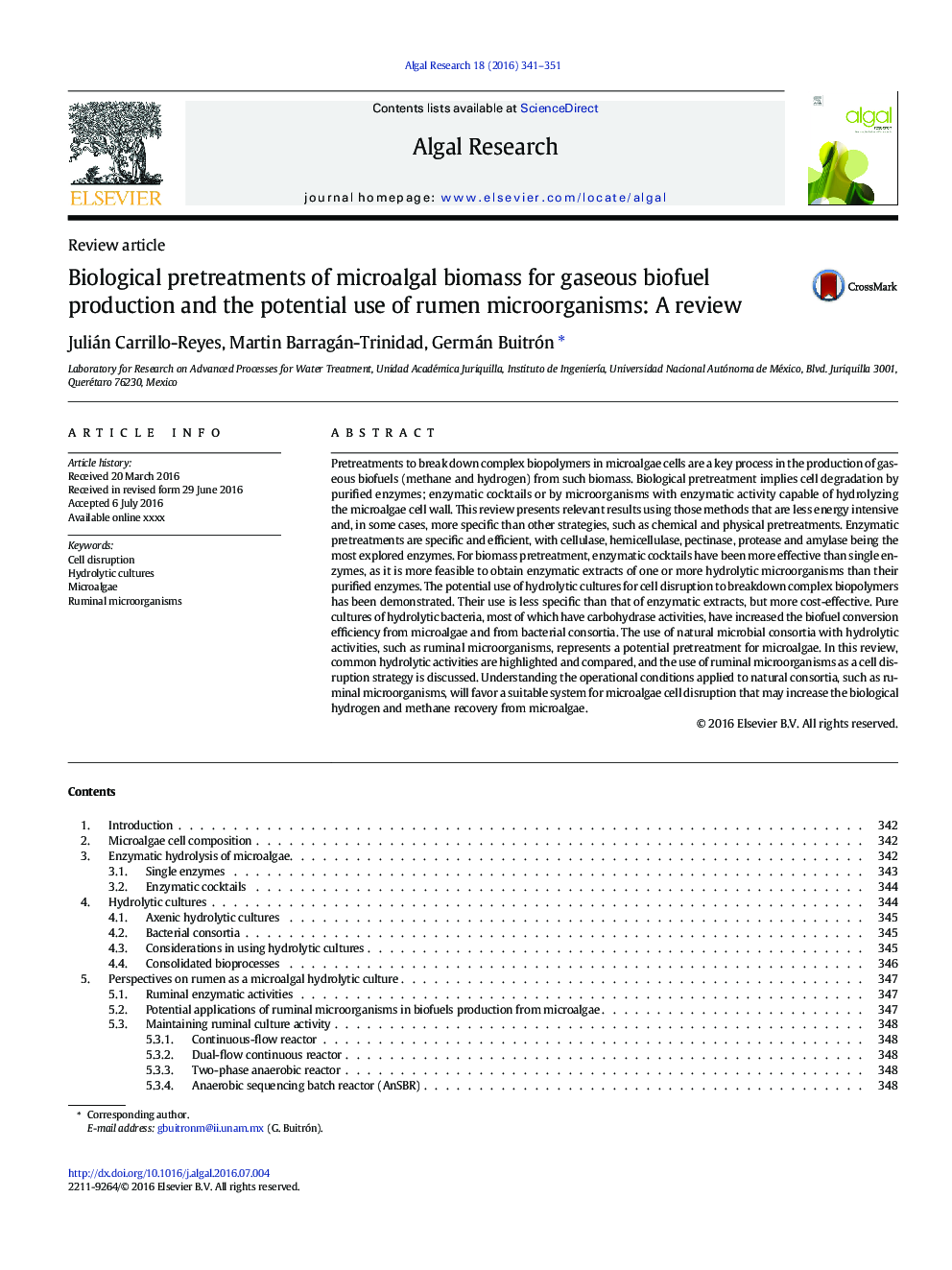| کد مقاله | کد نشریه | سال انتشار | مقاله انگلیسی | نسخه تمام متن |
|---|---|---|---|---|
| 8086759 | 1521814 | 2016 | 11 صفحه PDF | دانلود رایگان |
عنوان انگلیسی مقاله ISI
Biological pretreatments of microalgal biomass for gaseous biofuel production and the potential use of rumen microorganisms: A review
ترجمه فارسی عنوان
پیشگیری از زیست شناسی زیست توده میکروالگال برای تولید سوخت های گازوئیل و استفاده بالقوه از میکروارگانیسم های شکمبه: بررسی
دانلود مقاله + سفارش ترجمه
دانلود مقاله ISI انگلیسی
رایگان برای ایرانیان
موضوعات مرتبط
مهندسی و علوم پایه
مهندسی انرژی
انرژی های تجدید پذیر، توسعه پایدار و محیط زیست
چکیده انگلیسی
Pretreatments to break down complex biopolymers in microalgae cells are a key process in the production of gaseous biofuels (methane and hydrogen) from such biomass. Biological pretreatment implies cell degradation by purified enzymes; enzymatic cocktails or by microorganisms with enzymatic activity capable of hydrolyzing the microalgae cell wall. This review presents relevant results using those methods that are less energy intensive and, in some cases, more specific than other strategies, such as chemical and physical pretreatments. Enzymatic pretreatments are specific and efficient, with cellulase, hemicellulase, pectinase, protease and amylase being the most explored enzymes. For biomass pretreatment, enzymatic cocktails have been more effective than single enzymes, as it is more feasible to obtain enzymatic extracts of one or more hydrolytic microorganisms than their purified enzymes. The potential use of hydrolytic cultures for cell disruption to breakdown complex biopolymers has been demonstrated. Their use is less specific than that of enzymatic extracts, but more cost-effective. Pure cultures of hydrolytic bacteria, most of which have carbohydrase activities, have increased the biofuel conversion efficiency from microalgae and from bacterial consortia. The use of natural microbial consortia with hydrolytic activities, such as ruminal microorganisms, represents a potential pretreatment for microalgae. In this review, common hydrolytic activities are highlighted and compared, and the use of ruminal microorganisms as a cell disruption strategy is discussed. Understanding the operational conditions applied to natural consortia, such as ruminal microorganisms, will favor a suitable system for microalgae cell disruption that may increase the biological hydrogen and methane recovery from microalgae.
ناشر
Database: Elsevier - ScienceDirect (ساینس دایرکت)
Journal: Algal Research - Volume 18, September 2016, Pages 341-351
Journal: Algal Research - Volume 18, September 2016, Pages 341-351
نویسندگان
Julián Carrillo-Reyes, Martin Barragán-Trinidad, Germán Buitrón,
